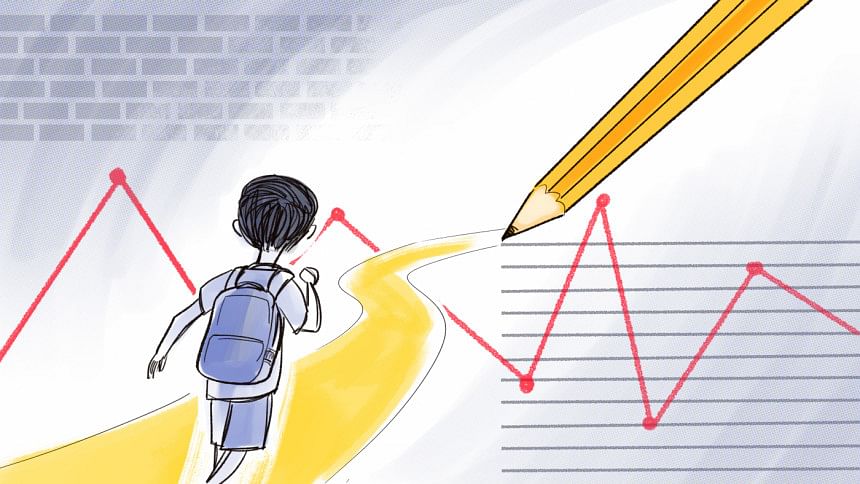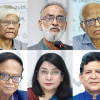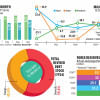Spending on education falls short of expectations

After the national budget is unveiled, the government always boasts that education gets significant investment as one of the priority sectors. The budgetary numbers will also tell you so.
A closer look, however, reveals a gap between what is written in the budget documents and the reality.
Since the size of the national budget is ballooning, the expenditure on education, which constitutes a critical component of a nation's human capital development, is also on the rise.
However, in terms of gross domestic product (GDP), the actual spending has remained almost stagnant, and, in some years, it has even experienced a fall. This stands in stark contrast to what Bangladesh committed on global forums.
For example, when the Dakar Declaration came in 2000, the country said it would spend 6 percent of GDP on education. The United Nations Educational, Scientific and Cultural Organisation recommends earmarking four to six percent of the GDP for the sector.
The actual spending in the education sector as a share of GDP has stood at less than 2 percent for the last 15 years.
In 2009-10, the maiden year for the Awami League of its four consecutive terms, the government spent Tk 11,996 crore for education, which represented 1.52 percent of GDP.
Five years later, the outlay more than doubled to Tk 25,088 crore, yet it was only 1.60 percent of GDP. It again doubled to Tk 52,824 crore in a span of five years in 2021-22. Still, it amounted to 1.52 percent of the economic output.
Such dismal spending is one of the lowest even among the least-developed countries, the club of the poorest nations in the world.
An analysis of the 2023-24 national budget by the Centre for Policy Dialogue (CPD), a think-tank, showed at least 35 LDCs redirected funds amounted to at least two percent of their GDP for education between 2016 and 2022.
Bangladesh's expenditure averaged 1.8 percent during the period. Myanmar devoted 2.1 percent.
India, a developing nation, spent 4.6 percent of its GDP in 2021 while Pakistan, also a country belonging to the similar category, spent 1.7 percent, World Bank data showed.
Sadly, a large chunk of the education budget of Bangladesh goes towards meeting non-developmental expenses, mainly for teachers' salaries, leaving the government with little to invest to improve quality.
Educationists and experts have long emphasised the importance of investing in education to foster innovation, enhance productivity, and ensure sustainable economic growth.
They argue that adequate funding for education is not merely an expenditure but an investment for future prosperity.
Therefore, the failure to prioritise investments in human capital development could have far-reaching consequences, which may impede progress towards achieving development goals and exacerbate socio-economic disparities.
"It is not possible to ensure quality education with the current level of allocation and spending," said Fahmida Khatun, executive director of the CPD.
The economist said there is a huge gap between physical and social infrastructure.
"We have put more emphasis on the physical infrastructure. However, if there is no social infrastructure, who will run the economy? We need educated people to run technologies and industries, but where will they come from?"
Fahmida points out that a portion of the allocated funds remains unused due to inefficiency and bureaucratic complications.
Rasheda K Choudhury, a noted educationist and executive director of the Campaign for Popular Education (CAMPE), said if the country can't properly develop the capacity of its people, it will need to hire experts from abroad.
This is already happening in the garment sector, the largest foreign currency earner of Bangladesh.
"We are implementing many mega projects and developing infrastructure. Undoubtedly, these play important roles in the country's progress. But if we fail to enhance human capacity, these developments will not be sustainable," Choudhury said.
The less spending on education has a flipside: people's out-of-pocket expenditure is on the rise.
Between 2022 and 2023, a family's out-of-pocket costs per school-going child increased by 25 percent and 51 percent at the primary and secondary levels, respectively, according to the Education Watch Report 2023, prepared by the CAMPE.
The average annual cost per child in 2023 was Tk 17,294 at the primary level and Tk 41,424 at the secondary level. It was about a quarter less for rural areas.
Private tutoring and commercial guidebooks were major contributors to the costs, the report said.
The Unesco's Global Education Monitoring Report 2022 said that families bear 71 percent of the education expenditure in Bangladesh.
Mohammad Tariq Ahsan, a professor at the Institute of Education and Research under the University of Dhaka, said, "We take initiatives to build infrastructure like constructing new classrooms and buying laptops, but we also need to invest in other aspects, including enhancement of teachers' skills."
"We have a shortage of teachers. So, we need to invest more to recruit more teachers and raise their salaries."
What is even more disappointing is that the authorities can't fully use the development budget, which highlights that they don't understand the priorities.
Planning Commission officials say cost overruns and delays in implementing education-related projects are responsible for the lower allocation.
The projects in the education sector had 27.5 percent cost overruns over the last five years while as much as 34 percent of the projects had to have their deadlines extended, data from the commission showed.
In the wake of the persistent low funding, experts have called for greater political will, and commitment to prioritise education financing, and enhance the quality and efficiency of spending.
"Education is truly one of the most powerful instruments for reducing poverty and inequality and it sets the foundation for sustained economic growth. Let's start investing in it more," wrote Harry Anthony Patrinos, senior adviser for education at the World Bank, in 2016.
Selim Raihan, executive director of the South Asian Network on Economic Modeling, complemented: "No country in the world will be able to show that they achieved a high level of income and development without investing heavily in education."


 For all latest news, follow The Daily Star's Google News channel.
For all latest news, follow The Daily Star's Google News channel. 









Comments